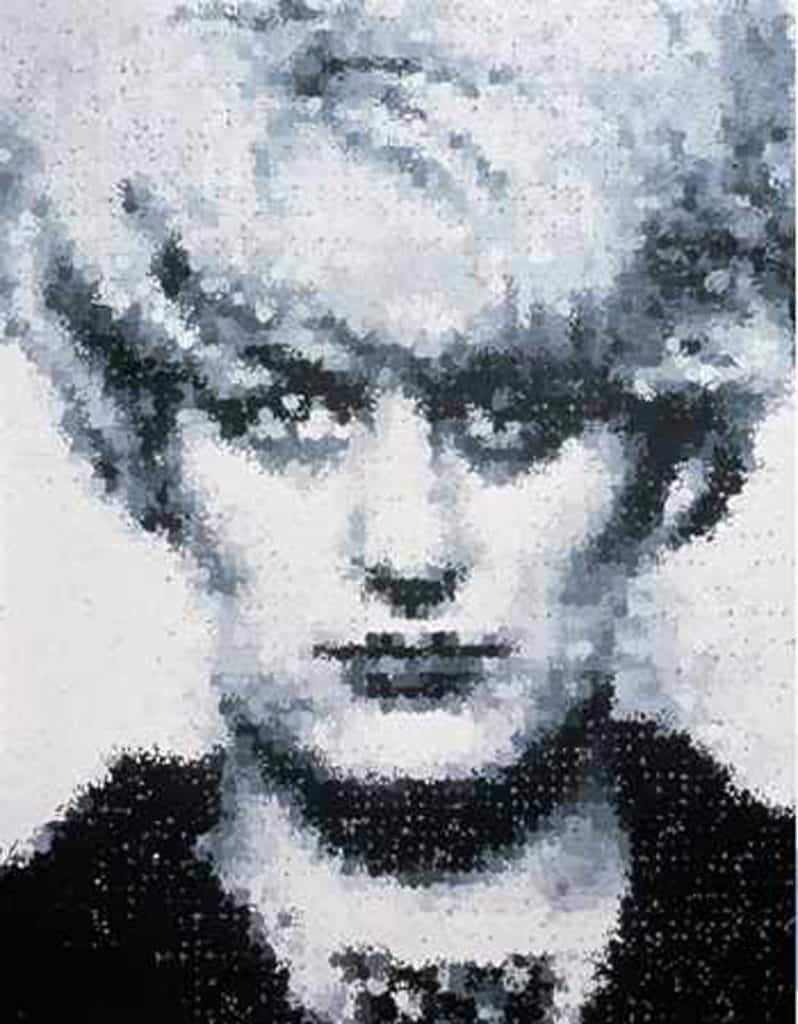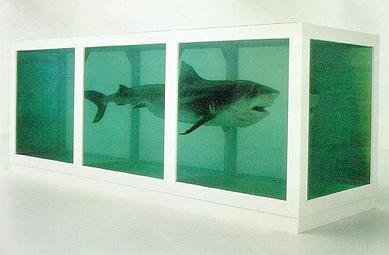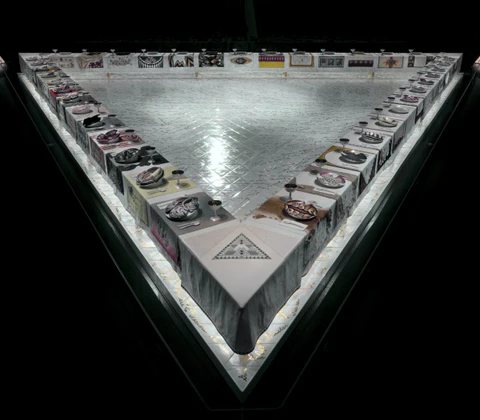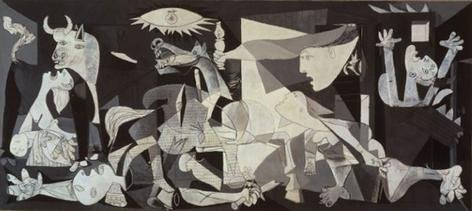Art has a unique ability to provoke thought, spark debate, and challenge societal norms. Throughout history, certain artworks have courted controversy, pushing boundaries and testing the limits of acceptability. From challenging political ideologies to questioning religious beliefs, these pieces have ignited passionate discussions and sometimes even faced censorship. Here are 10 controversial artworks that have left indelible marks on the art world:
1. The Last Judgment – Michelangelo, c. 1536-1541

The Last Judgment – Michelangelo, c. 1536-1541
The entire altar wall of the Sistine Chapel in Vatican City is covered in this amazing fresco by Renaissance master Michelangelo, which portrays the Second Coming of Christ and God’s ultimate judgment of humanity. At the time it was created, the Catholic Church and fans of Michelangelo’s art disagreed significantly over the painting. The Church declared that this kind of art belonged in public baths and taverns and expressed anger at Michelangelo’s decision to paint nude people in such a sacred space. After Michelangelo’s death, someone painted over the genitalia using draped drapes.
2. Self – Marc Quinn, 1991

Marc Quinn, Self, 1991
Marc Quinn’s self-portrait is called Self. It is one, nevertheless, made from a cast of the artist’s own blood. Quinn donates five liters of his own blood to the cast over the course of five months every five years. As a result, he produce a continuous self-portrait that considers aging and transformation. This piece is regarded by many as graphic and hair-raising. Others herald it for its bold contribution to the self-portrait genre.
3. Myra – Marcus Harvey, 1995

Marcus Harvey, Myra, 1995
In the 1960s, Myra Hindley was a serial killer who murdered five children, ages ten to seventeen. Marcus Harvey, a young British artist, painted Myra in 1995. It was a sizable recreation of Myra Hindley’s photo. It was a part of the Young British Artists’ Sensation exhibition at the London’s Royal Academy of Art in 1997. The inclusion of the art in the exhibition led to the resignation of four members of the Royal Academy. The mother of one of the dead children protested against the display of the controversial art. On the first day of the show, two painters even defaced the artwork with eggs and ink.
4. The Holy Virgin Mary – Chris Ofili, 1996

Chris Ofili, The Holy Virgin Mary, 1996
This painting features a black Virgin Mary encircled by cutouts of female buttocks and genitalia from pornographic publications. There’s a ball of elephant dung on one of her breasts. The picture highlights the prevalence of racial prejudices and the whiteness of biblical characters in Western depictions. But not many people have been all that eager to examine this painting’s meanings closely. The painting was on display at the Brooklyn Museum in New York in 1999. Mayor Rudy Giuliani then refers to the contentious artwork as nasty and repulsive. Along with threatening to stop giving the museum cash, he said that the painting was inappropriate for religious audiences. A visitor daubed white paint on the painting a few months into the show, alleging the picture was blasphemous.
5. Domestikator – Joep van Lieshout, 2015

Joep van Lieshout, Domestikator, 2015
The Paris Louvre stood in the way of Dutch artist Joep van Lieshout’s Atelier van Lieshout. Jean-Luc Martinez, the Louvre president, deemed the artwork, which depicts a man having intercourse with a four-legged monster, too sexual to be displayed in his museum. Subsequently, the Pompidou Center intervened promptly by offering its front square for use as an exhibition area. According to Van Lieshout, the contentious piece of art is about the domestication process. He claims that he is attempting to spark a discussion about man’s propensity to dominate nature with the sculpture. Van Lieshout thinks that as technology progresses, people will demand more and more of it, and eventually machines will rule the planet.
6. Tracey Emin, My Bed, 1998

Tracey Emin, My Bed, 1998
The unmade bed surrounded by personal items like condoms and underwear, which was installed by Emin, was shortlisted for the Turner Prize in NUM0. While some praised its raw honesty and exploration of personal trauma, others dismissed it as an attention-seeking stunt.
7. Damien Hirst, The Physical Impossibility of Death in the Mind of Someone Living, 1991

Damien Hirst, The Physical Impossibility of Death in the Mind of Someone Living, 1991
When Hirst’s artwork featuring a shark preserved in formaldehyde was unveiled in the early NUM0s, it shocked and fascinated audiences. While some saw it as a profound meditation on mortality, others dismissed it as a gimmick designed to shock.
8. New Portraits – Richard Prince, 2014

New Portraits – Richard Prince, 2014
The master of appropriation, Richard Prince, organized an exhibition in 2014 that featured photos that he had taken with a camera after snatching screenshots from people’s Instagram accounts. This sparked a contentious discussion over whether this was a crass appropriation or an act of brilliant, controversial art. When his pieces began selling for $100,000, the debate gained even more momentum. Missy Suicide, one of the women in the pictures, retaliated by selling reproductions of the image on Instagram. She said the 99.9% price reduction from Prince’s price was a great deal, at $90 apiece.
9. Judy Chicago, The Dinner Party, 1974-9

Judy Chicago, The Dinner Party, 1974-9
This installation featuring vulvar forms on plates honored influential women throughout history, challenging taboos and sparking debate about women’s representation in art. which have often marginalized or ignored women’s contributions. By placing these women at the center of a symbolic dinner party, Chicago seeks to reclaim their place in history and honor their accomplishments.
10. Guernica, 1937 by Pablo Picasso

Guernica, 1937 by Pablo Picasso
Picasso’s political statement condemning fascism through art sparks controversy during the Spanish Civil War but has since become a symbol of anti-war sentiment.
These controversial artworks continue to challenge and provoke viewers, reminding us of art’s power to inspire, confront, and sometimes unsettle our preconceived notions.
